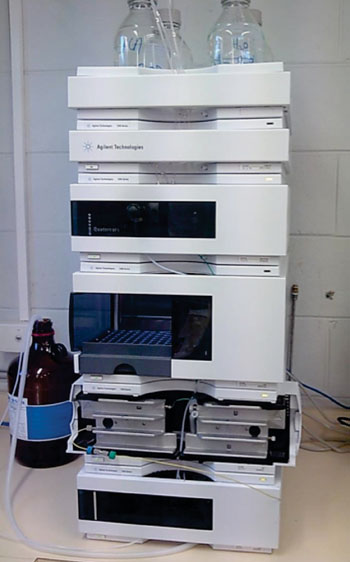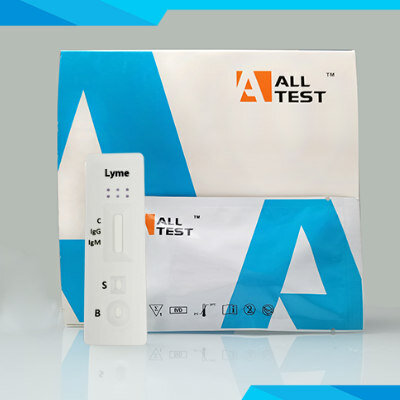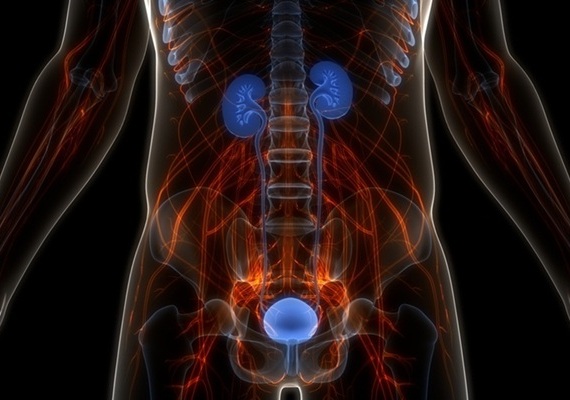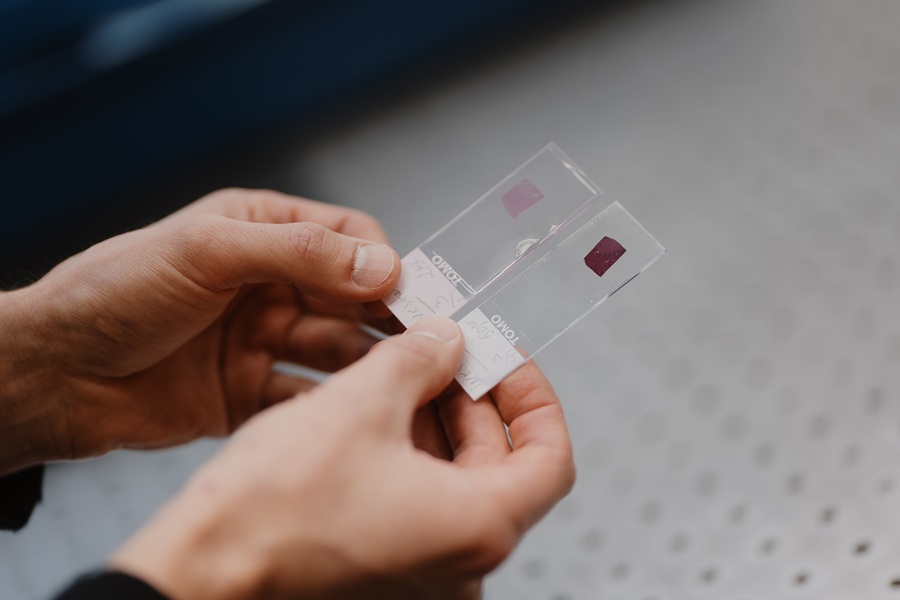Novel Method Identifies Fat Malabsorption
|
By LabMedica International staff writers Posted on 10 Sep 2014 |
A novel clinical test known as the Serum Retinyl Palmitate Test (RP) has been assessed and validated for the diagnosis of fat malabsorption, and compared to the fecal fat test (FFT).
The differential diagnosis for malabsorptive diarrhea is broad, encompassing luminal, mucosal and lymphatic disorders involving different organ systems and the possibility of undiagnosed systemic endocrine or immunodeficient diseases also highlights the importance of a thorough work-up.
Clinical biochemists at the University of Calgary (AB, Canada) carried out a case-control study on patients identified with chronic diarrhea, defined as persistent symptoms for greater than four weeks, and suspected malabsorption. Healthy control subjects were also recruited. Blood samples were collected at intervals after the administration of oil-soluble vitamin A. A fecal fat test was conducted on samples of patients after the consumption of 100 grams of a fat diet. Patients were defined as malabsorbers if the 72-hour stool fat excretion was greater than 5.9 g/day.
Serum levels of retinol (vitamin A) and RP were measured by reversed-phase high pressure liquid chromatography (HPLC; Waters; Milford, MA, USA). The detection limit for retinol was 0.18 mg/L and for retinyl-palmitate, it was 0.02 mg/L. Sixteen patients completed this study, 8 cases and 8 control subjects. Fecal fat results were available for 15/16 patients. The sensitivity of the FFT was 100%, but the FFT specificity was 42%, as 4/7 control patients were identified as malabsorbers. Cases with short bowel syndrome (SBS) had the lowest RP levels, but this did not meet statistical significance. There was no significant difference for serum RP levels when comparing cases and control patients.
The authors concluded that the RP test did identify patients with severe malabsorption secondary to SBS, but the performance of the RP test in patients with malabsorption from non-SBS etiologies was poor. However, the so-called gold standard, 72-hour FFT, had poor performance characteristics, highlighting the need for more useful diagnostics in identifying malabsorption. The study was published on August 8, 2014, in the journal Clinica Chimica Acta.
Related Links:
University of Calgary
Waters
The differential diagnosis for malabsorptive diarrhea is broad, encompassing luminal, mucosal and lymphatic disorders involving different organ systems and the possibility of undiagnosed systemic endocrine or immunodeficient diseases also highlights the importance of a thorough work-up.
Clinical biochemists at the University of Calgary (AB, Canada) carried out a case-control study on patients identified with chronic diarrhea, defined as persistent symptoms for greater than four weeks, and suspected malabsorption. Healthy control subjects were also recruited. Blood samples were collected at intervals after the administration of oil-soluble vitamin A. A fecal fat test was conducted on samples of patients after the consumption of 100 grams of a fat diet. Patients were defined as malabsorbers if the 72-hour stool fat excretion was greater than 5.9 g/day.
Serum levels of retinol (vitamin A) and RP were measured by reversed-phase high pressure liquid chromatography (HPLC; Waters; Milford, MA, USA). The detection limit for retinol was 0.18 mg/L and for retinyl-palmitate, it was 0.02 mg/L. Sixteen patients completed this study, 8 cases and 8 control subjects. Fecal fat results were available for 15/16 patients. The sensitivity of the FFT was 100%, but the FFT specificity was 42%, as 4/7 control patients were identified as malabsorbers. Cases with short bowel syndrome (SBS) had the lowest RP levels, but this did not meet statistical significance. There was no significant difference for serum RP levels when comparing cases and control patients.
The authors concluded that the RP test did identify patients with severe malabsorption secondary to SBS, but the performance of the RP test in patients with malabsorption from non-SBS etiologies was poor. However, the so-called gold standard, 72-hour FFT, had poor performance characteristics, highlighting the need for more useful diagnostics in identifying malabsorption. The study was published on August 8, 2014, in the journal Clinica Chimica Acta.
Related Links:
University of Calgary
Waters
Read the full article by registering today, it's FREE! 

Register now for FREE to LabMedica.com and get complete access to news and events that shape the world of Clinical Laboratory Medicine. 
- Free digital version edition of LabMedica International sent by email on regular basis
- Free print version of LabMedica International magazine (available only outside USA and Canada).
- Free and unlimited access to back issues of LabMedica International in digital format
- Free LabMedica International Newsletter sent every week containing the latest news
- Free breaking news sent via email
- Free access to Events Calendar
- Free access to LinkXpress new product services
- REGISTRATION IS FREE AND EASY!
Sign in: Registered website members
Sign in: Registered magazine subscribers
Latest Clinical Chem. News
- Carbon Nanotubes Help Build Highly Accurate Sensors for Continuous Health Monitoring
- Paper-Based Device Boosts HIV Test Accuracy from Dried Blood Samples
- AI-Powered Raman Spectroscopy Method Enables Rapid Drug Detection in Blood
- Novel LC-MS/MS Assay Detects Low Creatinine in Sweat and Saliva
- Biosensing Technology Breakthrough Paves Way for New Methods of Early Disease Detection
- New Saliva Test Rapidly Identifies Paracetamol Overdose
- POC Saliva Testing Device Predicts Heart Failure in 15 Minutes

- Screening Tool Detects Multiple Health Conditions from Single Blood Drop
- Integrated Chemistry and Immunoassay Analyzer with Extensive Assay Menu Offers Flexibility, Scalability and Data Commutability
- Rapid Drug Test to Improve Treatment for Patients Presenting to Hospital
- AI Model Detects Cancer at Lightning Speed through Sugar Analyses
- First-Ever Blood-Powered Chip Offers Real-Time Health Monitoring
- New ADLM Guidance Provides Expert Recommendations on Clinical Testing For Respiratory Viral Infections
- 3D Printed Point-Of-Care Mass Spectrometer Outperforms State-Of-The-Art Models
- POC Biomedical Test Spins Water Droplet Using Sound Waves for Cancer Detection
- Highly Reliable Cell-Based Assay Enables Accurate Diagnosis of Endocrine Diseases
Channels
Molecular Diagnostics
view channel
RNA-Based Blood Test Detects Preeclampsia Risk Months Before Symptoms
Preeclampsia remains a major cause of maternal morbidity and mortality, as well as preterm births. Despite current guidelines that aim to identify pregnant women at increased risk of preeclampsia using... Read more
First Of Its Kind Test Uses microRNAs to Predict Toxicity from Cancer Therapy
Many men with early-stage prostate cancer receive stereotactic body radiotherapy (SBRT), a highly precise form of radiation treatment that is completed in just five sessions. Compared to traditional radiation,... Read moreNovel Cell-Based Assay Provides Sensitive and Specific Autoantibody Detection in Demyelination
Anti-myelin-associated glycoprotein (MAG) antibodies serve as markers for an autoimmune demyelinating disorder that affects the peripheral nervous system, leading to sensory impairment. Anti-MAG-IgM antibodies... Read moreHematology
view channel
New Scoring System Predicts Risk of Developing Cancer from Common Blood Disorder
Clonal cytopenia of undetermined significance (CCUS) is a blood disorder commonly found in older adults, characterized by mutations in blood cells and a low blood count, but without any obvious cause or... Read more
Non-Invasive Prenatal Test for Fetal RhD Status Demonstrates 100% Accuracy
In the United States, approximately 15% of pregnant individuals are RhD-negative. However, in about 40% of these cases, the fetus is also RhD-negative, making the administration of RhoGAM unnecessary.... Read moreImmunology
view channel
Stem Cell Test Predicts Treatment Outcome for Patients with Platinum-Resistant Ovarian Cancer
Epithelial ovarian cancer frequently responds to chemotherapy initially, but eventually, the tumor develops resistance to the therapy, leading to regrowth. This resistance is partially due to the activation... Read more
Machine Learning-Enabled Blood Test Predicts Immunotherapy Response in Lymphoma Patients
Chimeric antigen receptor (CAR) T-cell therapy has emerged as one of the most promising recent developments in the treatment of blood cancers. However, over half of non-Hodgkin lymphoma (NHL) patients... Read moreMicrobiology
view channel
Handheld Device Deliver Low-Cost TB Results in Less Than One Hour
Tuberculosis (TB) remains the deadliest infectious disease globally, affecting an estimated 10 million people annually. In 2021, about 4.2 million TB cases went undiagnosed or unreported, mainly due to... Read more
New AI-Based Method Improves Diagnosis of Drug-Resistant Infections
Drug-resistant infections, particularly those caused by deadly bacteria like tuberculosis and staphylococcus, are rapidly emerging as a global health emergency. These infections are more difficult to treat,... Read more
Breakthrough Diagnostic Technology Identifies Bacterial Infections with Almost 100% Accuracy within Three Hours
Rapid and precise identification of pathogenic microbes in patient samples is essential for the effective treatment of acute infectious diseases, such as sepsis. The fluorescence in situ hybridization... Read morePathology
view channel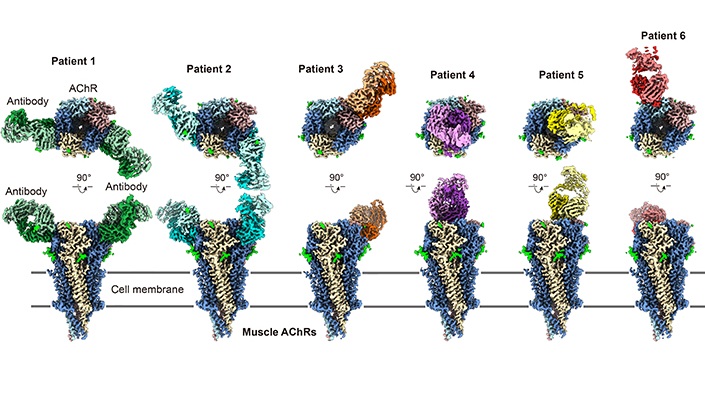
Advanced Imaging Reveals Mechanisms Causing Autoimmune Disease
Myasthenia gravis, an autoimmune disease, leads to muscle weakness that can affect a range of muscles, including those needed for basic actions like blinking, smiling, or moving. Researchers have long... Read more
AI Model Effectively Predicts Patient Outcomes in Common Lung Cancer Type
Lung adenocarcinoma, the most common form of non-small cell lung cancer (NSCLC), typically adopts one of six distinct growth patterns, often combining multiple patterns within a single tumor.... Read moreTechnology
view channel
Pain-On-A-Chip Microfluidic Device Determines Types of Chronic Pain from Blood Samples
Chronic pain is a widespread condition that remains difficult to manage, and existing clinical methods for its treatment rely largely on self-reporting, which can be subjective and especially problematic... Read more
Innovative, Label-Free Ratiometric Fluorosensor Enables More Sensitive Viral RNA Detection
Viruses present a major global health risk, as demonstrated by recent pandemics, making early detection and identification essential for preventing new outbreaks. While traditional detection methods are... Read moreIndustry
view channel
Cepheid and Oxford Nanopore Technologies Partner on Advancing Automated Sequencing-Based Solutions
Cepheid (Sunnyvale, CA, USA), a leading molecular diagnostics company, and Oxford Nanopore Technologies (Oxford, UK), the company behind a new generation of sequencing-based molecular analysis technologies,... Read more
Grifols and Tecan’s IBL Collaborate on Advanced Biomarker Panels
Grifols (Barcelona, Spain), one of the world’s leading producers of plasma-derived medicines and innovative diagnostic solutions, is expanding its offer in clinical diagnostics through a strategic partnership... Read more



